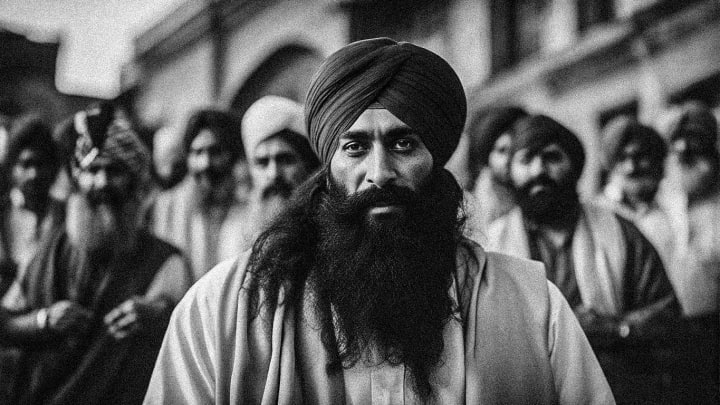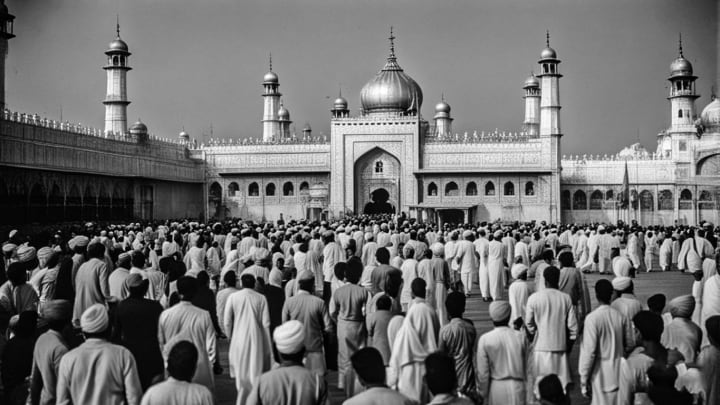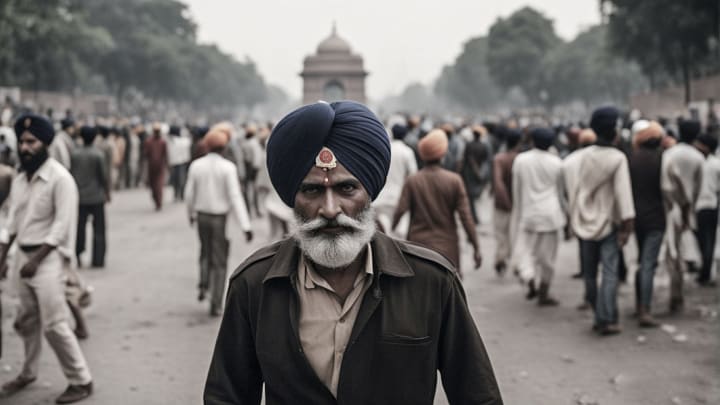The Khalistan Movement
A Historical Perspective on Sikh Separatism

The Khalistan movement, a chapter in India's history that left an indelible mark, particularly within the Sikh community, emerged in the late 20th century with the aspiration to carve out an independent Sikh state called Khalistan from the Indian state of Punjab. Spanning the 1980s and early '90s, this movement saw violent protests, resulting in the tragic loss of over 20,000 lives in Punjab. What began as a quest for self-determination soon evolved into a deeply divisive and violent episode in India's history.
The roots of the Khalistan movement lie in the demand for autonomy and the recognition of Sikhism as a distinct religion separate from Hinduism, which is the predominant faith in India. Despite the clear differences between Sikhism and Hinduism, the Indian Constitution initially classified Sikhism, Jainism, and Buddhism as subsects of Hinduism under Article 25. This categorization persisted, even though Sikh marriage matters were governed by the separate Anand Marriage Act.

Key figures emerged as central actors in shaping the Khalistan movement, with Jarnail Singh Bhindranwale standing out as one of the most influential yet highly controversial figures. Bhindranwale, revered by some Sikhs and condemned as a terrorist by others, gained notoriety in the late '70s due to his passionate advocacy of a conservative form of Sikhism known as the Nian. His ability to mobilize support across Punjab and his relentless pursuit of greater autonomy for Sikhs within India made him a pivotal figure in the Khalistan separatist movement. Tragically, his militant stance resulted in the deaths of thousands of innocent civilians and hundreds of police and security personnel.

A pivotal moment in the Khalistan movement's trajectory came with Operation Blue Star in June 1984. Indira Gandhi, then the Prime Minister of India, ordered the Indian army to storm the Golden Temple complex in Amritsar, one of the holiest Sikh shrines, where Bhindranwale and his followers had sought refuge. While the operation aimed to root out militants, it inflicted substantial damage on this sacred shrine and deepened the rift between Sikhs and the government. Bhindranwale was killed at the conclusion of the operation.
In a devastating turn of events, Indira Gandhi was assassinated by her Sikh bodyguards in October 1984, as retribution for Operation Blue Star. This act triggered widespread anti-Sikh riots in Delhi and various parts of India, leading to the deaths of thousands of Sikhs and further exacerbating the chasm between the Sikh community and the Indian government. Decades later, justice for the victims of these riots remains a contentious issue.

Following Operation Blue Star, the Indian government launched a severe crackdown on the Khalistan movement, resulting in the arrests of many separatist leaders and a subsequent waning of its momentum by the early 1990s. Today, the Khalistan movement is more active within the Sikh diaspora than on the ground in Punjab. A 2021 Pew Research survey revealed that over 95% of respondents in Punjab did not support the idea of Khalistan, signaling a significant shift in public opinion.
The contemporary landscape of Khalistan activism primarily resides within the Punjabi Sikh diaspora, particularly in countries like the US, UK, Canada, and Australia. A segment of this diaspora, particularly those with political influence, continues to advocate for Khalistan. For example, Jagmeet Singh, the head of Canada's New Democratic Party, relies on Sikh MPs for his political coalition, underscoring the significance of this minority vote bank.
The Khalistan movement's complex history serves as a stark reminder of the enduring legacy of ethnic and religious tensions in India. Its influence, even from a distance, continues to shape discussions and debates, highlighting the lasting impact of historical events and leaders on contemporary issues within the Sikh community. The Khalistan movement stands as a testament to the complexities of identity, autonomy, and reconciliation in a diverse and multicultural nation like India. While the violence of the past has waned, the legacy of Khalistan remains a poignant chapter in India's history, reminding us of the need for dialogue, understanding, and inclusivity in addressing the grievances of marginalized communities.






Comments (1)
Very interesting! Great job!